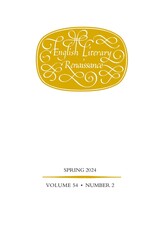
Published annually, the journal Dumbarton Oaks Papers was founded in 1941 for the publication of articles relating to Byzantine civilization.
In this issue: Audrey Becker, “Verbal and Nonverbal Diplomatic Communication at the Imperial Court of Constantinople (fifth–sixth Centuries)”; Alexandra Wassiliou-Seibt and Andreas Gkoutzioukostas, “The Origin and the Members of the Kamytzes Family: A Contribution to Byzantine Prosopography”; Michael Zellmann-Rohrer, “‘Psalms Useful for Everything’: Byzantine and Post-Byzantine Manuals for the Amuletic Use of the Psalter”; Raymond Van Dam, “Eastern Aristocracies and Imperial Courts: Constantine’s Half-Brother, Licinius’s Prefect, and Egyptian Grain”; Daniel Caner, “Not a Hospital but a Leprosarium: Basil’s Basilias and an Early Byzantine Concept of the Deserving Poor”; Paul Botley, “Greek Literature in Exile: The Books of Andronicus Callistus, 1475–1476”; Aude Busine, “The Dux and the Nun: Hagiography and the Cult of Artemios and Febronia in Constantinople”; Benjamin Garstad, “Dionysiac and Christian Elements in the Lysos Episode in the Greek Alexander Romance (β rec.).”

Published annually, the journal Dumbarton Oaks Papers was founded in 1941 for the publication of articles relating to Byzantine civilization.
In this issue: Walter E. Kaegi, “Irfan Shahîd (1926–2016)”; Daniel Galadza, “Robert F. Taft, S.J. (1932–2018)”; Sylvain Destephen, “From Mobile Center to Constantinople: The Birth of Byzantine Imperial Government”; Dina Boero, “Making a Manuscript, Making a Cult: Scribal Production of the Syriac Life of Symeon the Stylite in Late Antiquity”; Alexandre M. Roberts, “Framing a Middle Byzantine Alchemical Codex”; Lilia Campana, “Sailing into Union: The Byzantine Naval Convoy for the Council of Ferrara–Florence (1438–1439)”; Hugh G. Jeffery, “New Lead Seals from Aphrodisias”; Maria G. Parani, “Curtains in the Middle and Late Byzantine House”; Kostis Kourelis, “Wool and Rubble Walls: Domestic Archaeology in the Medieval Peloponnese”; Kathrin Colburn, “Loops, Tabs, and Reinforced Edges: Evidence for Textiles as Architectural Elements”; Eunice Dauterman Maguire, “Curtains at the Threshold: How They Hung and How They Performed”; Sabine Schrenk, “The Background of the Enthroned: Spatial Analysis of the Hanging with Hestia Polyolbos in the Dumbarton Oaks Collection”; Jennifer L. Ball, “Rich Interiors: The Remnant of a Hanging from Late Antique Egypt in the Collection of Dumbarton Oaks”; Maria Evangelatou, “Textile Mediation in Late Byzantine Visual Culture: Unveiling Layers of Meaning through the Fabrics of the Chora Monastery”; Thelma K. Thomas, “The Honorific Mantle as Furnishing for the Household Memory Theater in Late Antiquity: A Case Study from the Monastery of Apa Apollo at Bawit”; Avinoam Shalem, “‘The Nation Has Put On Garments of Blood’: An Early Islamic Red Silken Tapestry in Split”; and Elizabeth Dospěl Williams, “A Taste for Textiles: Designing Ummayad and Early ʿAbbāsid Interiors.”

READERS
Browse our collection.
PUBLISHERS
See BiblioVault's publisher services.
STUDENT SERVICES
Files for college accessibility offices.
UChicago Accessibility Resources
home | accessibility | search | about | contact us
BiblioVault ® 2001 - 2024
The University of Chicago Press









